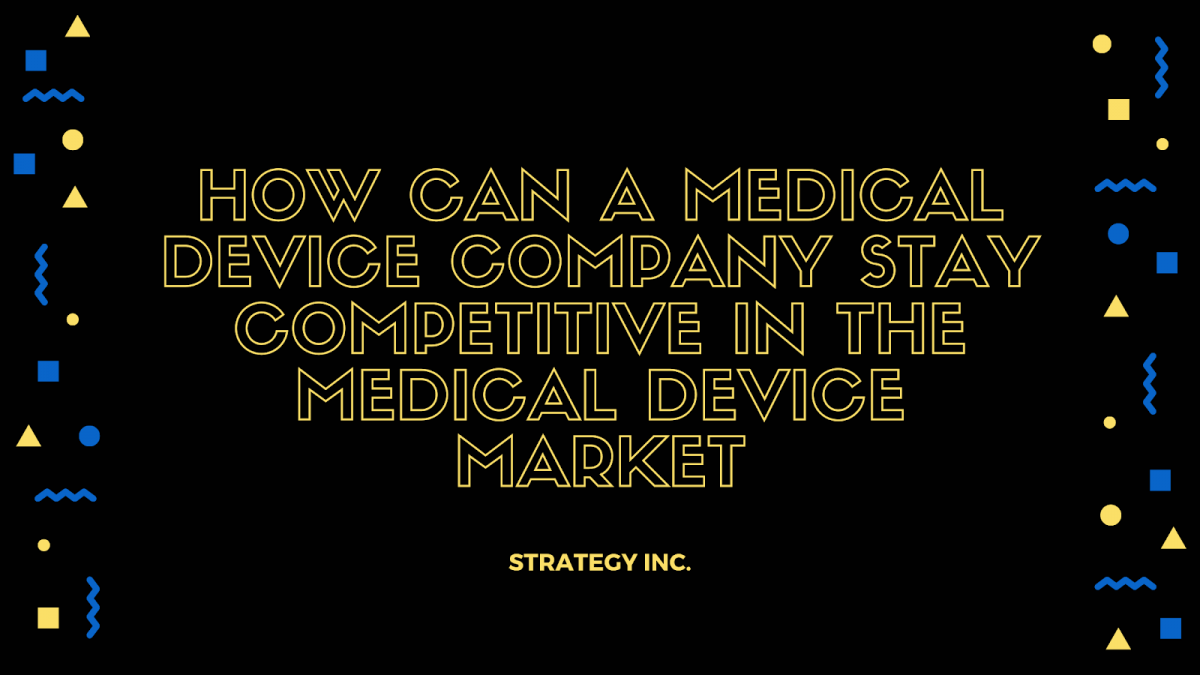Category: Products

Increasing Customer Convenience By Implementing These Payment Methods
Financial transactions
have become easier than ever with the many digital payment options available
today. However, this is a bit of a double-edged sword. Where does one begin to
make sense of all the possibilities? We hear all this new jargon, from the option
to sell bitcoins online
to innovative tech that allows customers to tap their transactions. It all
seems somewhat daunting, and we instinctively know that a lot of it has to be a
fad or at least rather niche.
This doesn’t mean that
there aren’t some feasible and efficient payment options you can implement to
improve customer convenience. While there are several ways to turn site visitors into loyal buyers, payment options are important. The trick lies in
understanding how these options work, and what degree of market adoption they
enjoy. There is no point in investing in a technology that only a fragment of
the market uses.

NFC Payment
One must then look for
the options that have a broader market adoption, and there are a number of them
that stand out. The possibility that is garnering the most significant market
share is NFC payment, and
it is prudent to understand why. Most new technologies fail because they rely
on the implementation and adoption of entirely new tech. NFC, or near field
communication, owes its success to the fact that it utilizes a technology that
most people carry around in their pocket in any case.
The technology was
initially developed to share media and documents between personal devices
instantly. It just so happened that it is the same technology your bank card
uses to make single-tap payments. Using readily accessible payment services
that act as an intermediary between the banks and your client, a simple tap of
their device is all it takes to complete a transaction.

QR Code Payments
Unfortunately, not all smartphones have NFC capabilities. This doesn’t exclude users without the facility to use their smartphones to make transactions. Companies like Zapper have stepped in with an alternative solution. QR codes made their debut as a novelty method of directing internet traffic in an engaging and fun way. You may remember a few years ago when scanning QR codes were all the rage, and every brand was coming up with ways to get you to scan a code to get more exposure.
That trend has died
down, but the technology has found a new purpose by way of payment option.
Zapper links to your bank account and allows a simple method of transaction.
You simply scan the code and follow the on-screen prompts and bob’s your uncle.
It turns out that this is also a very secure method of payment. Although it was
initially a fifty-fifty bet on whether it would see significant adoption, the
number of options and ways for QR payments has made it accessible enough to see
a decent market share.
PayPal Payment
Speaking of market share, PayPal is one of the most broadly used payment methods for international transactions. For the legion of freelance workers across the globe who get paid in USD, there is a bit of a challenge and process of freeing funds into local currency. It is because of this rather notable demographic that it is strange to see how few companies offer payment options for PayPal accounts.

5 Ways Businesses Can Avoid Risk of Information Breach Online
Successfully managing a business is a daunting errand because of the challenges you face amidst the journey. Cyber-attacks have been exponentially increasing; alone, in 2019, it is reported that breach of data exposed 4.1 billion records. And with that, the need to secure your business is becoming of enormous importance.
Business information serves as a critical asset for any company and makes it of the utmost worth. Therefore, in this post, I will be sharing 05 hand-picked ways to minimize and eradicate the risk of getting your information stolen by hackers.
Let’s dive right into how you can protect your information online from cyber thefts.
1. Use a Secure Network

Surfing on the websites using public Wi-Fi makes your information exposed to cybercriminals. That further leads to increased chances of getting your vital information stolen. Thereby, it would be best if you used a secured network that is end-to-end encrypted.
One of the best ways is to incorporate a virtual private network connection on all your devices to get full-fledged security. On top of that, using multiple devices VPN makes it easier for you to protect information sharing on all systems. Besides top-notch security, it will also enable you to have online anonymity on all networks.
2. Beware of Phishing Emails
To avoid information breach, you need to be vigilant about the emails you entertain in your daily routine. Phishing emails are increasing enormously and are one of the apparent reasons behind security vulnerabilities. Make sure you do not click any of the emails that seem like a spamming activity.
Also, companies must provide adequate security training to the staff, administering the emails to know the parameter to recognize a fraudulent email. Based on a recent report conducted by Mimecast State of Email Security, almost 60 percent of companies are likely to bear email attacks if not appropriately secured. Therefore, you need to ensure to keep intense monitoring before you open any email.
3. Encrypt Confidential Information
Access to sensitive information must be in the hands of critical stakeholders only. Company owners need to make their employees well-versed in handling cyber-security. It is essential to encrypt all the data you have stored in your business systems.
Never share any of your details using the collaboration tools as the risk of information theft is considerably high. For instance, it has been reported that the Zoom app has some serious privacy concerns that make your shared data vulnerable to cyber-attacks. Therefore, it is best to encrypt your data on all the platforms and restrict access to trusted people only.
4. Create a Strong Password

If you are operating multiple business accounts, you must be concerned about making it secure from cyber-attacks. One way is to make your account password sturdy enough to provide security defense to your accounts. That means you have to create a strong password to secure your sensitive information on online platforms.
People who use easy-to-remember passwords are more vulnerable to security breaches. Thus, you need to ensure you follow the standard security policies while creating your password on business accounts. Ensure you modify your password after 6 months so as to avoid the risk of code-cracking.
Moreover, it is recommended to use a blend of unique lower and upper case letters, symbols, and numbers. Make use of two-factor authentication in your password to fortify security. This way, you can create an impenetrable password that will make it hard for hackers to attack. And eventually, your information will be safe from unwanted malware.
5. Regulate Vulnerability Assessments
To make sure you are following all the standard security practices on your business systems, you must use an information security management system (ISMS). That has all the power to manage your business security in one place. This way, you can be assured that all your organization data is safe from any security threat or possible vulnerabilities. Try doing security audits every after some time to ensure business systems are well-equipped to combat threats.
Key Takeaways
The risk of an information breach is getting high, and with that, the need to upgrade your security practices is a must to consider. The online world is a cut-throat medium for hackers and other spammers. And to restrain them from harming your business, it is better you keep in practice the above shared 5 ways to avoid the risk of an information breach. Although there are other practices, too, the ones I have shared are imperative for your security.
Author Bio

Amtul Rafay is a Cybersecurity enthusiast who loves to write on topics pertaining to online privacy, internet security, and web privacy. She believes in the influential power of research-backed opinions to stay updated with the futuristic technology trends.

Why 5G Is so Important for the IoT
The 5th generation of wireless network technology, known as 5G, promises to dramatically increase data transfer speeds, decrease latency, and improve network reliability. These and other enhancements will result in more efficient internet access, and the ability to connect more devices within a given area at one time.
Such advancements are particularly important as the Internet of Things (IoT) continues to grow. Expansion of the IoT supported by 5G will be enriched by innovative IoT products for both consumers and businesses with built-in security features and software validated by QA & testing services. Here we explore exactly how the IoT will benefit from 5G.
What Is the IoT?

The IoT is the collection of internet-enabled devices that are an increasingly major part of human activity. The number of active IoT devices is expected to grow to 10 billion by 2020 and to 22 billion by 2025. A robust IoT enables new services, such as self-regulating electrical grid equipment that sends signals to utility operators when it needs replacement or repair.
IoT devices include everything from our familiar smartphones to smartwatches, internet-enabled video cameras, streetlights, motor vehicles, retail beacons, store inventory, shipping containers, manufacturing equipment, and robots. These devices add a high level of convenience to everyday tasks for individuals (such as shopping) and companies (such as inventory control).
In an example described by the World Economic Forum, we see just how integrated the IoT will become, even in things as commonplace as clothes: “Maybe you’ve heard about the Commuter x Jacquard, a jacket that connects to your smartphone via Bluetooth – the result of a collaboration between Google and Levi’s. With a haptic buzz on your cuff, you are reminded about the phone you left behind; by swiping your sleeve, you can skip a song; while a tap on the shoulder strap takes a picture.”
How 5G Supports the IoT
Naturally, the more of these connected devices there are, the more bandwidth they require. While the current generation of wireless technology, 4G, has the capacity to handle many of them, 5G can support many more. Cognizant VP Randal Kenworthy, a Forbes Technology Council member, states, “5G can send data to and from as many as a million devices per square kilometer, compared to 100,000 devices per square kilometer using today’s 4G networks.”
Additionally, 5G offers super-fast speeds that are 100 times greater than 4G’s and that enable devices to make split-second calculations with optimal performance. For example, self-driving cars must be able to transfer data within milliseconds to receive instructions for how to safely perform – with 5G, they are able to do precisely that.
In addition to expanded capability and speed, 5G is more reliable than previous wireless generations, meaning essential connected objects like locks, security cameras, and other safety devices will operate more effectively. In fact, according to Intel, 5G wireless networks will be “so reliable they can replace physical connections.”
5G also enables easier setup for the IoT. According to IoT For All, rather than connecting each device to a Wi-Fi router, “5G connectivity will let each device connect wirelessly, individually and directly to your internet service provider.” In this way, “You can think of 5G as a kind of next-generation Wi-Fi.”
Industry IoT

With 5G, many industries will be able to make ever-greater use of the IoT. Here are just a few examples:
- Agriculture. IoT sensors embedded in the soil can help farmers determine how much water or nutrients are needed and, in conjunction with artificial intelligence (AI), deliver them at the right time. These processes enable farmers to spend more time on higher-level tasks.
- Automotive. As mentioned above, self-driving vehicles require fast processing to operate as safely as possible. Additionally, maintenance shops can use sensors within cars to send reminders when it’s time to have them serviced.
- Healthcare. With 5G and the IoT, telehealth will become more ubiquitous, enabling doctors and robots to treat — and even perform surgery on — patients remotely. Wearable health monitors can help patients and healthcare providers closely monitor symptoms.
- Manufacturing. Manufacturers will have the opportunity to respond to consumer and business demands for new IoT products. They will also use IoT devices in the manufacturing and transportation processes, such as monitoring equipment and tracking packages.
- Smart Cities. The possibilities for smart city technology involving the IoT are nearly limitless. One example is connected parking lots that send real-time information to smartphones about parking availability. Another is using technology to make automotive and pedestrian traffic flow more efficiently.
In Summary
The World Economic Forum states, “Coupled with an array of other new technological solutions like IoT, edge computing, artificial intelligence (AI) and machine learning, 5G is powering the Fourth Industrial Revolution in the same way that steam, electricity, and silicon powered the previous three.”
Given how the IoT can evolve with the support of 5G, both consumers and businesses are likely to see great technological leaps in the coming years. Both will benefit from greater efficiency, convenience, and flexibility in their daily activities.

5 Strategies Your Start-up Can Implement to Survive an Economic Downturn
The COVID-19 pandemic has created an unpredictable business environment where even the most established companies are shifting their focus from growth to survival. For start-ups, the challenges are even more significant.
Thousands of start-ups enter the corporate race every year. However, only a little over half actually survive to their fourth year, and the startup failure rate at four years is approximately 44 percent. These are daunting numbers even in a normal economy.
Now consider an economic downturn. Investments dry up as venture capitalists become risk-averse and seek more reliable investments. Most start-ups work with slim cash margins so a slow sales cycle can create a major cash flow crisis. Also, start-ups thrive in an environment of close in-person collaboration. However, in these times of social distancing, that’s not an option.
Navigating an economic downturn is a daunting task for organizations in the early stages of development. However, it can also be taken up as an opportunity to innovate and implement new ideas that will help organizations come out stronger in the long run.
Here are five strategies that can help start-ups weather this economic downturn.
1. Cut costs

Start-ups track expenses carefully in a regular economy but during a downturn, it is important to actively cut costs. Eliminate low performing projects, trim employee perks, and carefully consider whether you need a brick-and-mortar location. Enable effective remote work conditions for your team or consider getting a coworking space to save on rent and utilities.
Even small budget cuts make a difference so eliminate overheads such as underutilized software licenses, free office lunches, and take careful stock of your inventory. If it’s not completely essential to the business, delay or don’t buy. Conversely, negotiate with suppliers on better deals and prices for essentials items.
2. Go digital
Optimize operations by going digital wherever possible. As an example, you can improve employee productivity and cut costs by automating the management of your software and hardware assets via a cloud-based IT asset management software. Get real-time information on the location of your IT assets, and ensure that the equipment is in top-shape with automated servicing and maintenance alerts.
Automating this function also enables employees to easily collaborate both on-premise or remotely while you receive real-time updates.
3. Hire freelancers
Start-ups thrive on highly motivated teams and downturn or not, you should not skimp on quality talent. If you cannot afford to hire full-time employees, consider freelancers, contractors, or part-time workers.
As the economy slows down, there is typically a large pool of talent to choose from due to lay-offs and cut-backs on hiring. You save money by paying them a fixed price or an hourly rate without the added cost of benefits such as healthcare, sick leaves, holidays, and other perks.

4. Don’t be afraid to pivot
An agile company is not afraid to pivot with a changing market. Consider multiple businesses that changed course from what they originally planned to do and found success with a different plan. For example, YouTube was originally a sort of video-based dating service, and Yelp was not always the go-to source for reviews — it started as an automated system to ask friends for direct recommendations.
An economic downturn changes consumer budgets and priorities which is why it is important to consider the new market reality and pivot your business accordingly. This could mean adding more products to your portfolio, changing your product, offering a discount on pricing, or targeting a whole new demographic. A downturn may require an overhaul of your plan but it could be the path to long-term survival and success.
5. Use government stimulus offers
Finally, it is important to avail financial assistance offered via government loans or stimulus packages. For example, the US Small Business Administration (SBA) offers a Paycheck Protection Program to eligible businesses. This loan is designed to provide a direct incentive for businesses to keep their employees on the payroll.
Likewise, the SBA’s Economic Injury Disaster Loan (EIDL) is designed to provide economic relief to businesses that are currently experiencing a temporary loss of revenue. EIDL proceeds can be used to cover a wide array of working capital and normal operating expenses, such as continuation to health care benefits, rent, utilities, and fixed debt payments. If you’re not familiar with this, there is an EIDL guide on the Zenefits website that can clear some doubts and answer your questions.
About the author
Rabia Mughal works as a Communications Manager at AssetSonar, a leading cloud based IT asset management solution. An experienced marketing communications professional, she is interested in the impact of digital transformation on modern business operations.

Having a State-of-the-Art Fleet of Company Vehicles
A fleet of vehicles is at the heart of any company. If these vehicles feature the latest technology, they’ll stand out from the crowd. For 2020 and beyond, let us take a very close look at how having a state of the art fleet of company vehicles is in your best interest.
All-electric
An all-electric fleet of vehicles is a great way to associate your brand with the future. Electric cars have taken off as environmentally friendly alternatives to conventional cars. Mileage on these vehicles increases every year, and you get more distance out of every charge than ever before. Some drivers are concerned about a lack of chargers, but this isn’t too concerning. Have a series of level 2 charger units installed in the company lot or garage. These chargers work incredibly quickly and at a minimal energy cost. Electric vehicles come in all sorts of shapes and sizes, so there’s no limit to the type of vehicle you can acquire.

Onboard navigation
Another impressive piece of tech is onboard navigation. With a reliable GPS, employees can get their jobs done without worrying about getting lost. While most people rely on their phones for directions, they aren’t ideal for dedicated navigation purposes. Not to mention, this is a dangerous practice when operating a moving vehicle. You’re much better off with an onboard navigation system. It’s easy to program these systems with common destinations for your drivers. They’ll know exactly where to go, and if they run into any trouble, they can easily report this to your headquarters.
GPS tracking

Tracking devices installed on company cars might sound Orwellian, but there are many reasons why such tech is essential for business fleet vehicles. For one, most insurance companies require them for vehicles used for business purposes. Secondly, they help with stolen vehicle recovery. Trackers can also provide data that helps companies optimize their routes and make recommendations to drivers in the future.
Company customization
Last but not least, company customization shows that you are invested and committed to transportation. Featuring your company logo on the side of a vehicle is a powerful move. You can even acquire custom license plates and banners that let other drivers know that it is a company vehicle. This display isn’t to assert your dominance on the road but rather to establish an industry standard at all times. When you have a fleet of hundreds of these identical vehicles, you know that the job is getting done every time.
Parking scheme
A fleet of vehicles needs to be backed by an efficient parking scheme. There’s nothing worse than a congested parking lot full of vehicles. It’s nearly impossible to take out a vehicle in the back, and there might not be enough space during off-peak hours. Look for tiered parking structures or even rotating platforms to make it easy to park and retrieve vehicles. You’ll save so much time when handling the fleet.
At the moment, having a state of the art fleet of company vehicles is a fantastic asset. You’ll be able to conduct transportation efficiently and in style. Look for the latest technology to propel you forward!

10 Ways to Maximize your Kickstarter Marketing Strategy in 2020
At a very trying time of COVID-19, times are quite tough for businesses, especially startups and entrepreneurs. However, what if there was a way to get funding by putting your project, idea, or invention online?
In this article, we will look at:
- What is Kickstarter?
- Marketing Tips for Kickstarter Campaign
What is Kickstarter?
For people who have been living under a rock, Kickstarter is a funding platform where creators can share and gather interest on a particular creative project they will like to launch.
Every project is created and independently crafted while the general public offers to fund them in return for rewards or the finished product itself. They are the ones that ultimately send the projects into production.
Kickstarter is split into two types of users: creators and backers. Creators are of course the ones who present their project ideas and the backers are the ones who fund them. To establish a great Kickstarter project, creators need to step up a page to display all the details of their project using text, video, and photos to tell viewers about their project. From there, creators set a funding goal and a deadline, and also need to include different levels of rewards backers can receive by pledging a specific amount because the more the higher the amount they pledge, the bigger the reward.
Kickstarter also has a number of general rules that creators must abide by for their projects. They must create something that can be shared with others; be honest and clearly presented; not be fundraising for charity; not be offering equity; and not involve prohibited items.
Marketing Tips for Kickstarter Campaign

The reality of any Kickstarter Campaign is that it takes a lot of time and energy o prepare, create, maintain, and manage a Kickstarter campaign. There are definitely certain steps that people as project creators can improve their chances of success on Kickstarter.
1. Do your research
Creators need to research their project before anything happens. The questions that they need to answer before starting their campaign is: how much does it actually cost to make their project? What is the minimum amount of funding they need? How many days do they want to run the campaign? Are there already similar projects?
You need to figure out how much it actually costs because it will help when it comes to creating rewards. They also need to research domestic and international shipping costs. Kickstarter is all or nothing, so companies need to remember and understand that if they don’t reach their funding goals, they do not get any money. If they set the money goal too high, they risk not hitting their goal and won’t get any money and reciprocally, if it is set too low, you may not be able to fulfill your obligations to backers.
Campaigns can last anywhere for one day to 2 months. Longer campaigns do not guarantee success because companies may have exhausted resources by the time the project wraps up and on the other hand, campaigns that are under 30 days risk not getting enough exposure and can result in less funding.
Companies also need to do their research to see if there are other similar campaigns because if there are, there really is no point in putting the campaign up because just because something similar that raised a lot of money will not translate into instant success for your project.
2. Spread the news about your upcoming launch
It is important to spread awareness for the upcoming launch. Having a website is very important because it drives traffic to it. Adding a banner at the top of your homepage with a call to action to sign up is very important so that people could learn more about your upcoming launch. The leads that you receive should be nurtured leading up to launch day with about one email a week. The emails that are sent out should educate subscribers on your product, tell them why they need your product, and explain how Kickstarter works and inform them of when and why you’re launching your project.
It is also important to build up social media presence and creating advertising campaigns. The more informed subscribers are about your product and upcoming launch, the more likely they are to convert into actual backers once your project goes live.
Sometimes it can be difficult to run everything and stay on it constantly, so employing companies like Pressfarm can help with public relations and creating everything needed to build a successful crowdfunding campaign.
3. Email existing and new contacts
Email marketing is a great way to spread awareness for your upcoming launch to new and existing contacts who have shown interest in your product. The main goal is to get subscribers on board with your project and have them ready to spread the word. However, don’t stop emailing when you are live, you can keep sending out emails with important campaign milestones too. But, during your campaign, do not bombard your family, friends, or other subscribers incessantly because it can lead to a large number of unsubscribers.
4. Make an engaging video
Your video that you create is the main point of your campaign and it is the first thing that people look at. You need to make sure that your video is easily understandable and gets your project’s point across. Longer videos tend to have a lower video completion rate and there is a correlation between a high video completion rate and overall funding.
5. Create an easy-to-read Kickstarter page
Digital content should be written for the people who tend to skim instead of reading in detail. When you do this, you are making your content more digestible and easier to understand. Campaigns should be very visual and get to the point without using too much content.
6. Make sure your rewards are easy to understand
Keep your rewards descriptions short and to the point. You need to let people know what they are getting, how much they are saving and when they will be getting them. Do not over do your rewards because a campaign with a lot of rewards rarely works and creating a small quantity gives you a chance to introduce new rewards like flash sales, during your campaign.

7. Include multiple images
You should use high resolution, high-quality images for your social networks, advertising efforts, press releases and blog posts. Also, if you will be using any print media, they should also be hi-res images.
8. Create a Bitly link
You can use Bitly to shorten your Kickstarter page URL and use that link when you are referencing your project. Bitly actually provides great stats because it includes how many clicks you link there and where they are coming from. This information will help decide where to spend the most time promoting your project.
9. Utilize updates and your backers
You should create periodic updates on Kickstarter to send to your backers. Write updates when you hit milestones to thank your backers and use them to pass on the message of new stretch goal rewards and drive backers to your social network.
Your backers already like your project, so they are the ones that will help you and be your biggest advocates. Ask them to help spread the word whether it be word-of-mouth or social media. Make it easy for them to share by including short messages they can copy and paste to share on social media outlets.
10. Social media is important
Create your profile on the top networks by starting a Facebook Advertising campaign to build an audience base, help build your email list and begin building buzz around the upcoming launch.
Conclusion
Creating a Kickstarter Campaign is very easy, but getting the right backing and the right amount of money is the hard part. Timing is everything because you want to be the project that people are wanting to back, so you need to see what your competition is. Your product needs to be something that people want and are willing to put money into. These tips are as simple as it comes and used correctly will maximize your Kickstarter Marketing strategy.

Various Applications of Blue Hydrogen for the Energy Industry
Hydrogen is the tenth most abundant element on the earth. In order for it to be used at scale, hydrogen has to be extracted from compounds. Blue hydrogen is produced from fossil fuels, typically natural gas. One of the mainstream methods used to extract blue hydrogen is known as Steam Methane Reforming (SMR). A considerable amount of carbon dioxide and methane is produced during the production of blue hydrogen. However, around 80% to 90% of the total emission is captured and stored. This process is known as Carbon Capture and Store (CSS).
The potential for hydrogen to be used at a larger commercial scale is definitely promising and how it could positively impact the decarbonization of the energy sector is clear among industry operators, however, questions remain. Is it versatile enough to invest billions of dollars on?
Various Applications of Blue Hydrogen

Blue hydrogen is extremely versatile. It finds several applications across an array of energy-consuming industries. It is speculated that hydrogen fuel will eventually transform the energy industry, making it more sustainable and environmentally friendly. Considering that private companies are being incentivized to reduce greenhouse emissions, this makes it extremely important to take initiatives to start integrating hydrogen into mass-scale production.
Along with various energy consulting firms in the UK and all around the world, key members of the energy sector are also taking keen interest and making great investments in hydrogen, especially blue hydrogen.
- Fuel Production
Hydrogen is used in the production of fuel in many ways. Typically, it is used to process crude oil. As a result, refined fuels such as gasoline and diesel are produced. It is also employed in the fuel production process to get rid of various contaminants from crude oil or refined fuels. For example, hydrogen is used to remove sulphur from refined fuels, especially diesel.
Over the years, the consumption of hydrogen in refineries has increased significantly. This is mainly due to the strict rules and regulations, such as the IMO 2020 sulfur regulation, regarding maintaining the quality of diesel by lowering the amount of sulphur in it.
- Industrial Applications
Hydrogen has an exhaustive list of industrial applications. It is extremely versatile, which is why it is used abundantly in not only the energy industry but also other core industries around the world.
One major example is hydrogen’s application for energy production. Specifically, it can be injected into current grid pipelines so that it can be stored for later use. Examples include transport applications or power generation.
Some industrial applications of blue hydrogen outside of the energy industry include its use in the production of ammonia and flat glass. Blue hydrogen is used in metalworking, especially for metal alloying. It can also be used in the direct reduction of iron ore, which is an important process in steel manufacturing. It finds applications in the electronic industry as well.
- Energy Generation
Blue hydrogen plays a vital role in generating electricity more efficiently. It can be used as an alternative to air-cooling methods for the cooling of power generators. However, the biggest contribution of blue hydrogen in regards to energy generation comes in the form of stationary fuel cells.
Blue hydrogen can be used in stationary fuel cells. These cells are often employed as backup energy sources in buildings and there are major implications for long haul transport and commercial fleets that rely on fuel cells to operate. It is speculated that stationary fuel cells possess the potential to revolutionize the transport industry if they are used for other vehicular options like trains, cars, and buses.
Blue Hydrogen or Green Hydrogen – Which is Better?

Many industry experts are still divided over the blue hydrogen-green hydrogen debate.
We cannot ignore the economic benefits of blue hydrogen. While it is true that blue hydrogen is not as eco-friendly as green hydrogen, its current production costs are significantly low compared to green hydrogen. Plus, advancements and growing support for CCS is making blue hydrogen one of the most viable sustainable energy solutions at the moment. Across Europe, many hydrogen-CCS projects are going ahead.
There’s one more factor that must be considered when it comes to the significance of hydrogen for the energy industry – the storage of excess electricity or surplus energy.
Storing Excess Energy
The energy industry is evolving and more sustainable, energy efficient solutions are being sought after. Unfortunately, certain technological advancements are required to ensure grid infrastructure is able to meet high demand and alleviate storage and demand imbalances. As a result, many energy companies still favor the use of fossil fuels to produce energy.
The good news is that hydrogen may be able to bridge this gap between energy production and consumption. There are electrolyzer technologies that are being used at scale today, which can draw hydrogen out of storage and place it into a fuel cell for subsequent electricity production or power-to-liquid schemes.
Author Bio
Pangea Strategic Intelligence’s on demand energy consulting platform facilitates engagements with market-embedded Experts so Clients make better business decisions, faster.

How Can a Medical Device Company Stay Competitive in The Medical Device Market
There is currently a period of steady growth in the global medical device industry. Competition-driven innovations have enabled small companies to enter the market and compete with established companies. Competitive analysis consulting firms also play an important role in the success of a medical device innovator. Competitive market analysis delivers an understanding of both the direct and indirect competitive landscape. Using medical device competitive analysis consulting experts, a medical device developer can identify the target market’s unmet needs, underserved market segments and clinical expectations competitors are unable to meet. This supports decision making that attracts the allocation of available resources and can drive accelerated adoption. Competitive analysis consulting experts assess the target market space, strategic product positioning and potential existing technology’s product line extension. Product positioning analysis may include:
- Competitive landscape
- Competitive pricing
- Product positioning analysis
- Competitor corporate deep dive
- Competitive product and company documentation

A medical technology that enters the target market and delivers accurate and efficient clinical results at a reduced cost can earn a significant market share. Hospital value analysis committees focus on the value a device delivers in terms of healthcare outcomes, cost and safety.
Medical device companies are now able to achieve the highest possible return on investment with early and extensive exit planning. Medical device consulting firms can identify potential mergers and acquisition targets. They can also identify potential companies for strategic alliances. This allows an innovator a range of desirable exit strategies.
With the full suite of strategic consulting services by medical device consulting companies, a medical device developer can address hurdles presented by reimbursement constraints and compliance-related restrictions. This allows the company to divert its resources to an innovation that has the potential to secure accelerated adoption and the highest return on investment. With strategically informed internal and external decision making, this affords a range of medical innovation to remain competitive.
Harmonize Operations

A medical company that effectively achieves operational harmony will have the highest probability to achieve successful commercialization. Harmonizing operations can leverage real-time information across the company. This information typically includes end-user procedural preferences, post-market clinical data including cost-effective clinical outcomes data along with research and development effectiveness. This information guides device development.
The medical device company must ensure seamless data sharing across different departments. For this, the company requires the right infrastructure to transfer data. The company also requires high-quality analytics to utilize available data. Medical device consulting firms have the required communication tools and resources to gather, verify and analyze data to develop an improved and cost-effective technology.
Leverage New Markets
A company can identify a new market or a segment of the market for its existing medical device. Identifying expanded markets can offer longer and sustained competitive advantage. However, the company is recommended to work with a competitive analysis consulting expert to analyze the level of current and future competition in the new market. A company can identify new markets with medical device market analysis by a medical device consulting firm.

What You Need For Your Next Online Business Meeting
With more of the world working from home than ever before, chances are you will attend or run an online business meeting. And since the majority of businesses usually use face to face meetings, it takes an adjustment to run a meeting online while remaining effective.
That is why it’s essential to learn what you need for your next online business meeting because virtual meetings require equipment and software you might not currently have. So, in case you have to run your business in the virtual world, even if it’s temporary, follow this guide to set up your tech.
Meeting Software

The central part of any online business meeting is your meeting software, and there are several programs to choose from. Zoom is a popular software choice for businesses to meet with their staff because it’s free and easy to use. That said, Zoom isn’t the only meeting software you can choose for your business meetings.
Here are some other software choices you could download and use:
- Cisco Webex Meetings
- Join.me
- GoToMeeting
- BlueJeans
- UberConference
- Microsoft Teams
- Google Meet
Be sure the software you pick has the capabilities you need, like screen sharing, whiteboarding, or dedicated sub-rooms for breakout sessions. Each conference software has different amenities, so choose one that works for you and your business.
Also, be sure that your team can easily download the software because each participant will need the software to join your meeting.
Proper Lighting
Using your computer’s camera or your front-facing phone camera is probably your best choice if you don’t want to invest in a third-party camera.
The problem is, you still have to worry about proper lighting because if your lighting is in the wrong place, your staff will have a hard time concentrating on your words. So, you want to gather three LED daylight bulbs and place one directly in front of you, one at 45 degrees to your right, and one 45 degrees to your left.
Be sure these lights are slightly above you, so the lighting isn’t too harsh, and they will give you sufficient lighting for your meeting without distracting shadows.
Up to Date Microphone

More important than lighting is your staff’s ability to hear what you’re saying, and for that, you need a proper microphone. You might have a sufficient microphone inside your computer already, and the best way to tell if your audience can hear you is to test it before your meeting.
If you don’t like the sound coming through your microphone, you want to invest in a standalone microphone. These products have noise-canceling features that block out surrounding sounds so that your staff can hear you better.
For example, noise-canceling features could block out a residential air conditioning repair Santa Rosa residents might need during a business meeting to stay cool. In fact, that feature would be helpful in any house across the world because sometimes there are loud noises during your meeting and you don’t want the disruption.
The Blue Yeti microphone is a popular model for podcasters and would work perfectly for any online business meeting you conduct.
Bring Your Teams Together
Businesses need to adjust to current times and that means conducting business meetings online. The truth is, it doesn’t take a whole lot of preparation to have business meetings with your staff because you already have most of the equipment you need.
When you don’t or if it’s not good enough, ordering tech gadgets to enhance your current equipment is a smart investment in your business. Doing so will allow you to conduct business anywhere and in any climate so you can carry on regardless of the state of the world.


